Though not as vibrant as a parrot or as elegant as a parakeet, the Scarlet-faced Liocichla captivates bird lovers with its melodious song. This small bird is not only easy to care for but also brings joy to every morning. If you’re looking for a peaceful companion, join Nongnghiepvietnam.org as we explore the secrets to raising a healthy, singing Scarlet-faced Liocichla.
1. Scarlet-faced Liocichla: Small Bird, Big Voice
1.1. What is a Scarlet-faced Liocichla?
Known scientifically as Malacopteron, the Scarlet-faced Liocichla is a common resident of many regions around the world, especially those with cooler climates. Its name, often translated to “Little Mi,” refers to its clear, high-pitched song, reminiscent of its larger relative, the Hwamei.
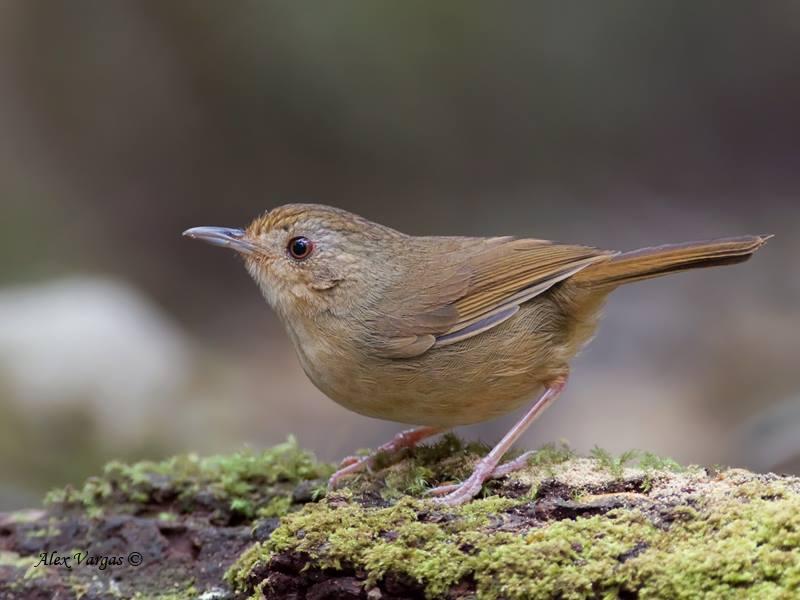 What is a Scarlet-faced Liocichla?
What is a Scarlet-faced Liocichla?
1.2. Identifying the “Little Diva” by Appearance
At first glance, the Scarlet-faced Liocichla can be mistaken for a sparrow due to their similar appearance. However, with a little attention, you can easily recognize this “little diva” by these characteristics:
- Short beak: Unlike the long, pointed beaks of many other birds, the Scarlet-faced Liocichla’s beak is quite short and broad.
- Smooth dark brown plumage: Their coat is typically dark brown, which, though not flashy, exudes a soft, elegant appearance.
- Slender but strong legs: Don’t let their small legs fool you; they are the “secret weapon” that helps the Scarlet-faced Liocichla move nimbly, defend itself, and easily find food.
1.3. Distinguishing Male and Female Scarlet-faced Liocichlas
Distinguishing males from females is an important step in choosing the right bird and providing appropriate care.
Based on song:
- Male: Possesses a high-pitched, diverse, and far-reaching song.
- Female: Sings softly, rarely vocalizes, and usually only emits chirping sounds.
Based on appearance:
- Male: Longer and wider tail feathers, upper beak longer than lower beak, robust body, more feathers, and dark eyes.
- Female: Equal beak length, smaller body, fewer feathers, shorter tail, brownish plumage, and lighter colored eyes.
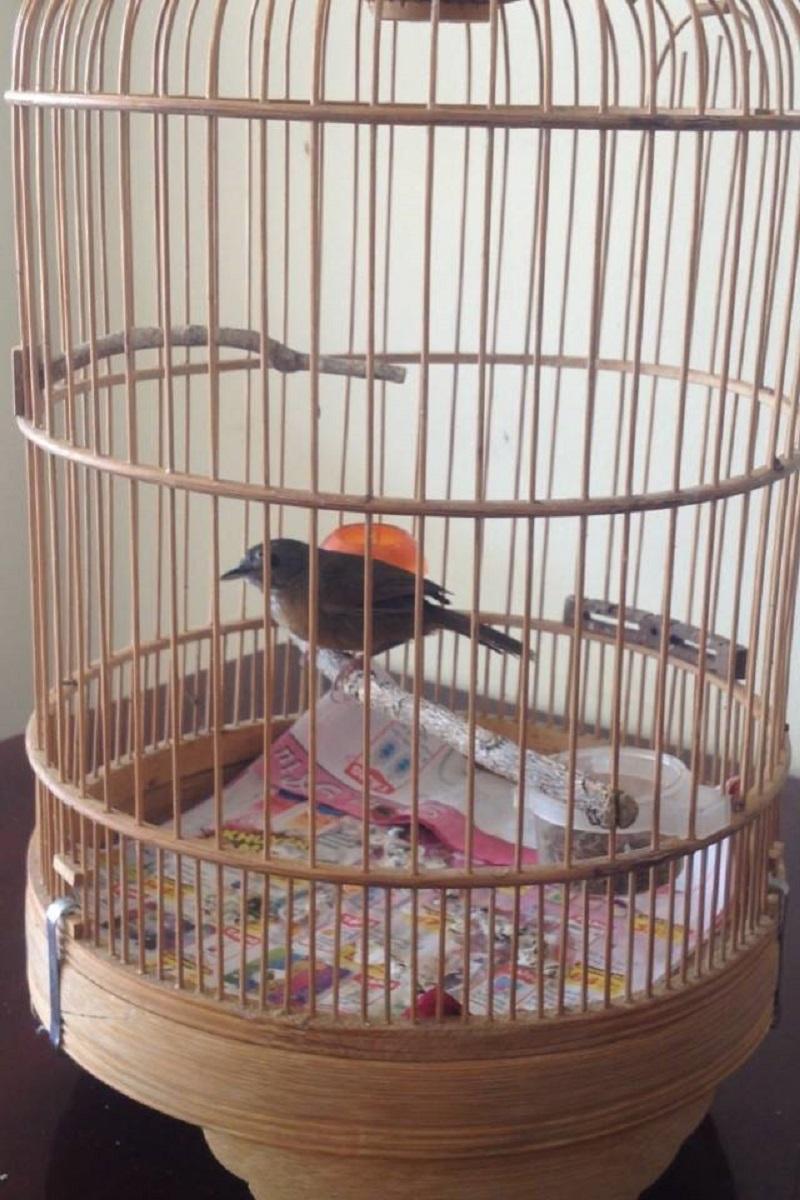 How to distinguish male and female Scarlet-faced Liocichlas
How to distinguish male and female Scarlet-faced Liocichlas
1.4. Mating Season of the Scarlet-faced Liocichla
Scarlet-faced Liocichlas typically mate around April and May of the Lunar calendar, concluding in mid-August. Their nests are usually discreetly built on high branches, in dense bushes, or on bare hills to avoid predators.
Each clutch, the female typically lays 3-4 eggs, and remarkably, both parents share incubation duties until the chicks hatch. This species is known for its monogamy, remaining bonded throughout their lives.
1.5. Classifying Scarlet-faced Liocichlas
Scarlet-faced Liocichlas are classified based on their song and value:
By song:
- Common song: This is the common song among most Scarlet-faced Liocichlas.
- Fighting song: Birds with fighting songs are highly sought after by bird enthusiasts.
By value:
- Singing and fighting, accustomed to captivity: This type is highly valued.
- Sings alone, doesn’t fight: This type is generally less expensive.
- Fights anywhere: This is the most valuable type.
2. Unveiling the Secrets to Raising a Healthy, Singing Scarlet-faced Liocichla
2.1. Choosing a Scarlet-faced Liocichla
- Prioritize healthy birds: Choose birds that are alert, active, free of defects, and have smooth, shiny feathers.
- Observe the appearance carefully: Select birds with a solid head, soft, fluffy feathers close to the skin, and soft wing feathers. Additionally, dark-edged leg scales, thick legs, curved claws, and short toes are also signs of a healthy bird.
- Check the bird’s eyes: The eyes should be clear, without corneal damage.
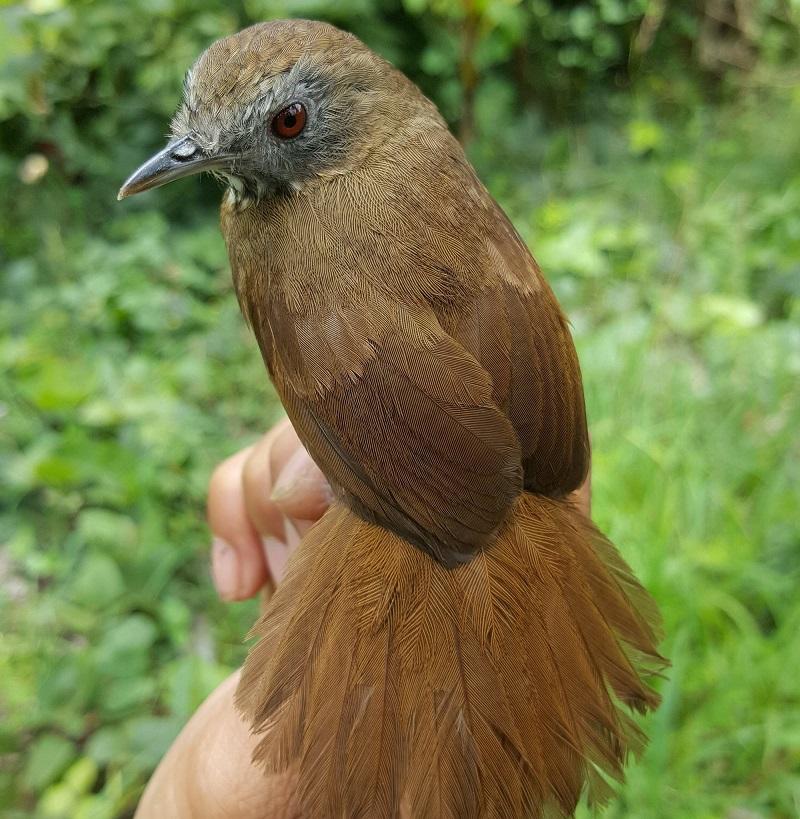 How are Scarlet-faced Liocichlas classified?
How are Scarlet-faced Liocichlas classified?
2.2. The Ideal “Apartment” for a Scarlet-faced Liocichla
- Spacious cage: You can choose a bamboo or wooden cage, as long as it provides ample space for the bird to fly and hop comfortably. Inside the cage, equip it with a water dish, food dish, and perches.
- Regular cage cleaning: Avoid cleaning the cage too frequently, as this can frighten the bird and affect training. Instead, combine cage cleaning with bath time.
- Sunbathing: Sunbathing helps the bird eliminate bacteria, synthesize vitamin D, prevent diseases, and enhance feather shine. Sunbathe the bird in the morning 2-3 times a week, for about 15 minutes each time.
2.3. A “Gourmet” Diet for the Scarlet-faced Liocichla
In the wild, the Scarlet-faced Liocichla typically enjoys small insects like mealworms, crickets, grasshoppers, and locusts. When kept in captivity, maintain this diet, avoiding sudden food changes to facilitate adaptation and healthy development.
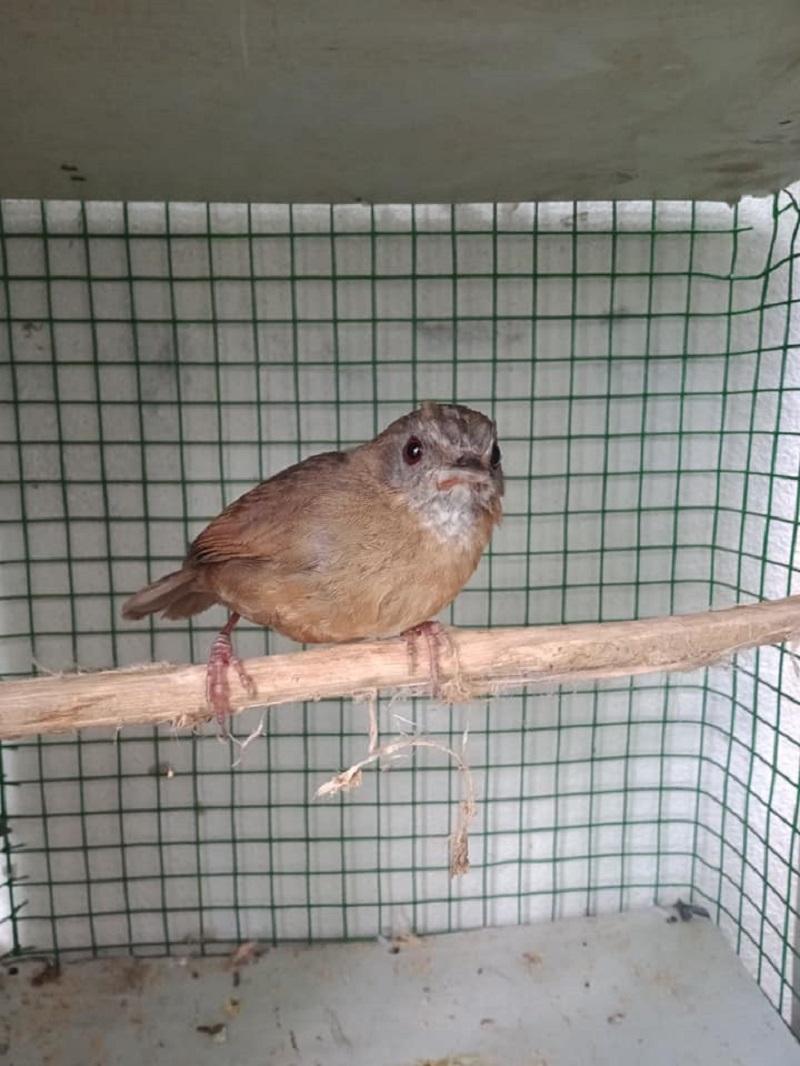 How to raise a Scarlet-faced Liocichla?
How to raise a Scarlet-faced Liocichla?
2.4. The Secret to Bathing a Scarlet-faced Liocichla
Regular bathing keeps the bird’s feathers clean, soft, and prevents bacterial and parasitic infestations.
You can use a specialized bird bath or improvise by placing a small bowl of water inside the cage. Initially, the bird might be hesitant to enter the water; you can use its favorite food to entice it. After a few times, the bird will become accustomed and bathe independently.
3. “Secret Recipe” for Nutritious Scarlet-faced Liocichla Food
3.1. Ingredients:
- Chicken eggs: 5
- Broken rice: 250g
- Sugar: 1 tablespoon
- Bone and shell powder: 2 tablespoons
3.2. Instructions:
- Roast the broken rice over low heat until fragrant, then turn off the heat.
- Crack 5 chicken eggs into the rice pan, add sugar, bone and shell powder, and mix well.
- Dry the mixture in sunlight until completely dry. If it clumps, you can break it up by hand.
Combine both egg yolks and whites to provide complete nutrition. Supplement this homemade food with fresh insects like grasshoppers, mealworms, and crickets for balanced development. Avoid feeding dried worms, which can cause hoarseness. Limit bean powder, as it can alter the bird’s song.
4. “Training” a Golden Voice for your Scarlet-faced Liocichla
To train your Scarlet-faced Liocichla to sing beautifully, consider these methods:
- Choose wild-caught birds: Birds caught in the wild often have richer and more varied songs due to learning from other species. However, they are typically harder to tame than birds raised in captivity.
- Pair breeding: Keep a male and female pair. Initially, place their cages side by side for them to get acquainted. After about a week, separate the cages by 10-20cm so they can’t see each other. This encourages them to sing and call for their mate.
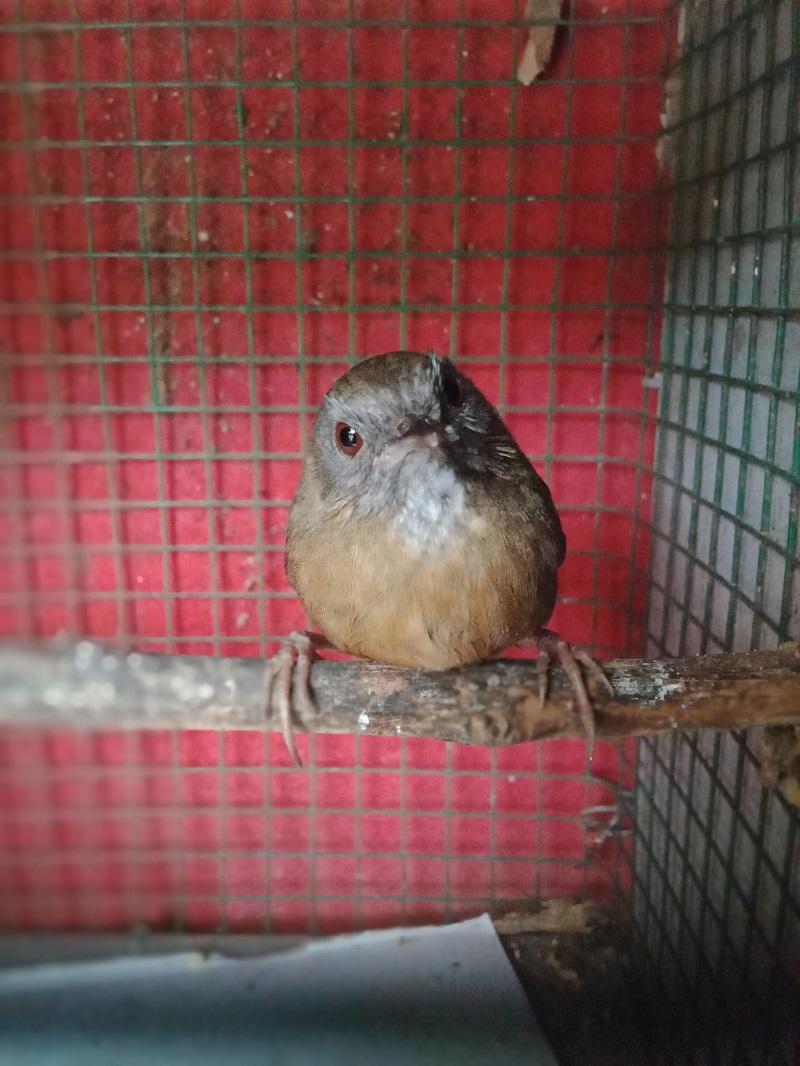 How to bathe a Scarlet-faced Liocichla
How to bathe a Scarlet-faced Liocichla
5. Answering the Question: When Will My Scarlet-faced Liocichla Start Singing?
The Scarlet-faced Liocichla possesses a clear, melodious song like a babbling brook, with distinct high and low notes. Each bird has a unique tone, no two are alike.
The time it takes for a Scarlet-faced Liocichla to start singing depends on factors like breed, environment, and care. Typically, they begin singing within 1-2 weeks of being raised and trained.
6. Effective Trapping Tips for Scarlet-faced Liocichlas
If you need to catch a Scarlet-faced Liocichla in the wild or if your bird escapes, try these methods:
- Food traps: At noon, birds often descend to the ground for food and water. Use this opportunity to trap them with a net or cage.
- Decoy birds: Place another male bird near the area where your bird escaped. The decoy’s song can lure it back.
- Trapping nets: Purchase trapping nets from bird supply stores or bird markets.
7. Current Market Prices for Scarlet-faced Liocichlas
Prices vary based on song, appearance, and origin. Here’s a general guide:
- Wild-caught: 100,000 VND/bird.
- Female: 300,000 – 350,000 VND/bird.
- Male: 450,000 – 500,000 VND/bird.
Purchase from reputable breeders, bird shops, or online communities specializing in birds. Choose a seller with a warranty to avoid purchasing a low-quality bird.
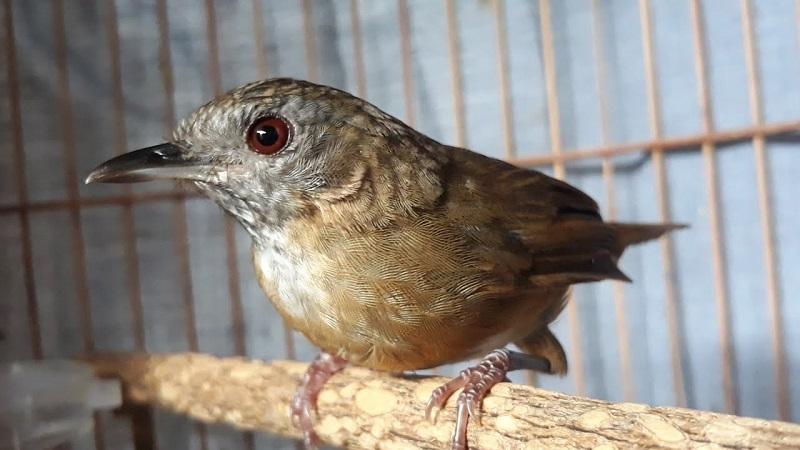 When will my Scarlet-faced Liocichla start singing?
When will my Scarlet-faced Liocichla start singing?
We hope this guide on raising Scarlet-faced Liocichlas helps you choose and care for your feathered friend. Stay tuned to Nongnghiepvietnam.org for more helpful information!
